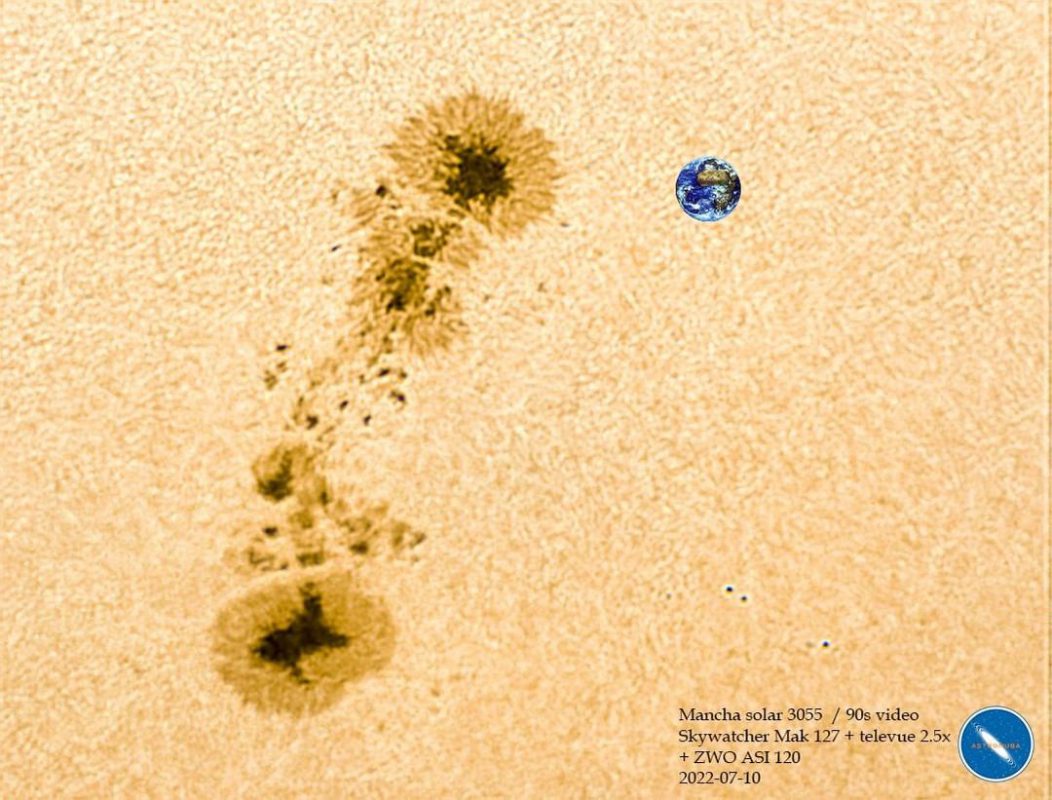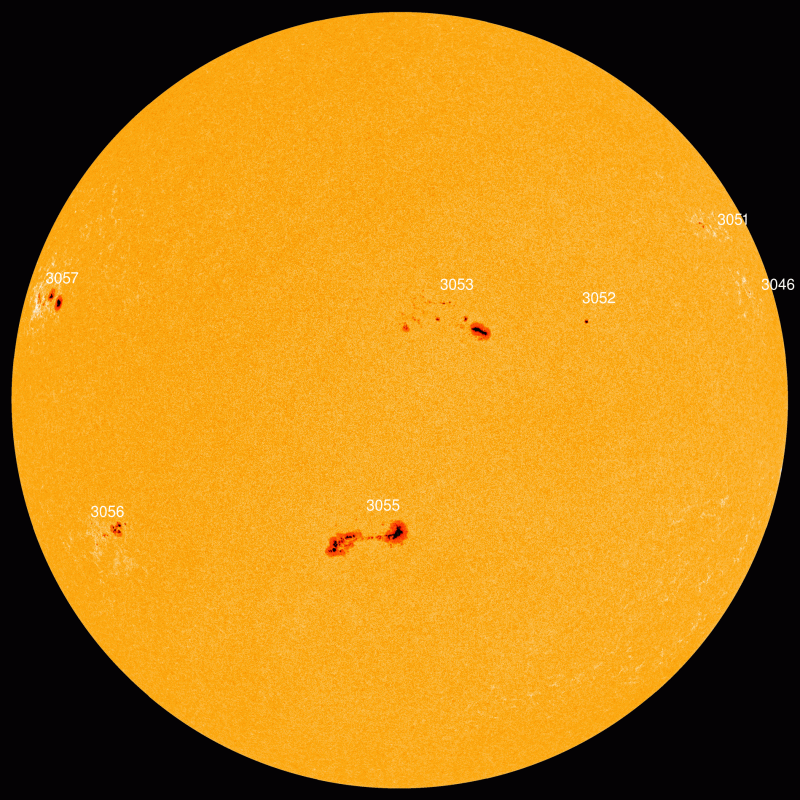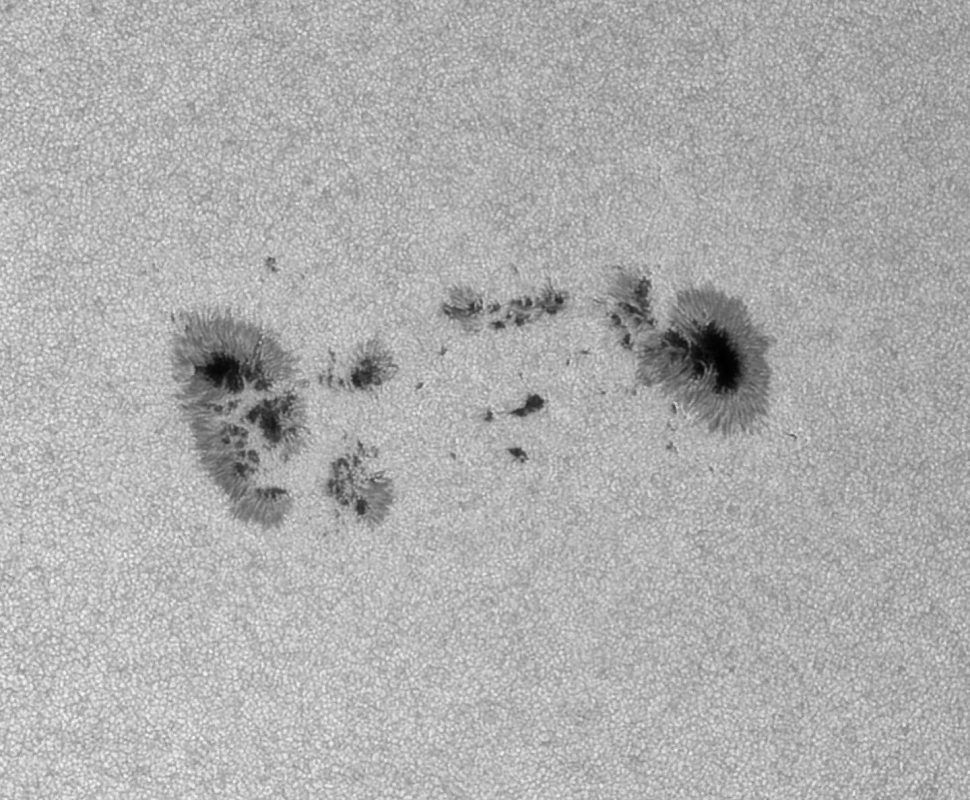Solar Update: July 2022
Solar activity continues to increase ahead of the prediction curve and solar imagers are loving it! In this gallery blog, we take a peak at some recent solar images.
We start with Rob Calfee’s image of horns on the limb of the Sun. These are echoed by two snake-like features in the foreground. The horns are actually a Prominence: a loop of plasma flow from sunspot to sunspot. On the limb, they look bright, but on the solar disc look dark because they are cooler than the surface. The fur on the surface of the Sun are magnetically confined tubes of plasma called fibrils.

This next image was made with a monochrome camera and then tinted in processing. It shows a tight grouping of three active regions — areas of strong local magnetic field that give rise to visible features like sunspots. The regions are embedded in granules that are formed by a convection process that continually delivers energy from deeper in the Sun to the surface.

This next image is a great reminder of just how big these spots on the Sun are. The easily visible ones are typically bigger than our Earth!

“A sunspot arises due to the magnetic field lines that emerge from the interior of the Sun towards its surface, generating dark areas, due to a drop in temperature of the solar surface (about 3700° C compared to 5500° C on its surface). These spots are made up of dark zones, umbra, and transition zones, penumbra. These spots occur more frequently the closer the Sun is to its maximum 11-year cycle — being able to reach sizes superior to our own Earth. This happens precisely with the active region of the photograph.” A Maksutov 127mm /1500mm scope was connected to a Tele Vue 2.5x Powermate (making an effective focal length of 3750mm) to closely frame the sunspot. A ZWO ASI120MC camera was used to take 90-seconds of video. Processed in AstroSurface and Photoshop. Taken from Huelva in southwestern Spain on July 10, 2022.
Royal Astronomical Society of Canada ─ Niagara Centre member Glen Pidsadnick captured this active, full-disk solar image with a Tele Vue NP101 APO telescope (left). Next to it is a solar disc image from the orbiting Solar Dynamics Observatory taken the same day. You can match the features on this space image to what Glen captured on the ground.


This second image from Glen, made at the same time as the first, used a Calcium k line filter that operates at 393.3nm in the far violet end of the spectrum. Notice how the plages (light areas around sunspots) stand out more in this wavelength.

Below is an excellent example of sunspots showing a dark, central area (the umbra) and a lighter outer area (the penumbra) in a sea of granules.

It’s been an exciting solar cycle and we’ll bring you more updates in the future.
Did you observe, sketch, or image with Tele Vue gear? We’ll like your social media post on that if you tag it #televue and the gear used. Example:
#televue #tv85 #ethos #filtered #sun
Do you want your Tele Vue images re-posted on Tele Vue Optics’ Social Media accounts? Use this hashtag for consideration:








